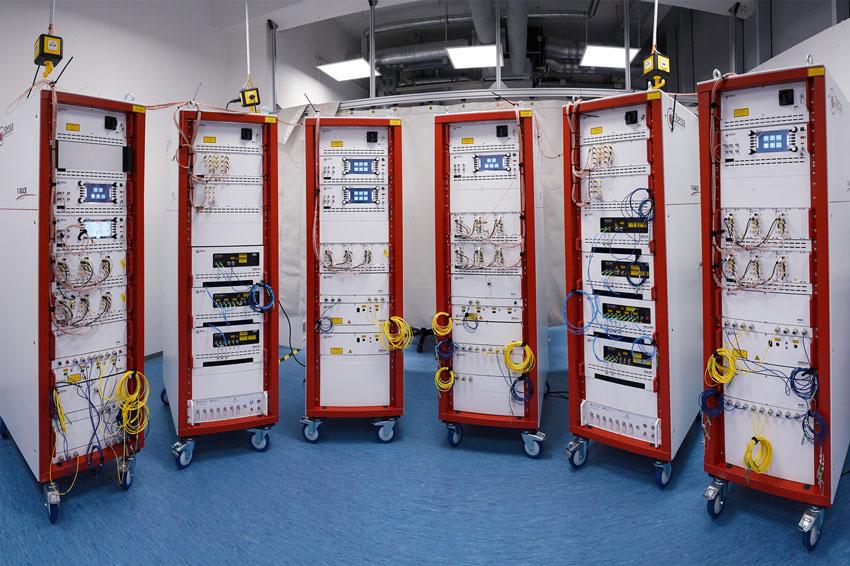Towards the quantum internet
The future of the Web lies in quantum communication
In the German state of Saarland, a test track is now operational between Universität des Saarlandes (UdS) and Hochschule für Technik und Wirtschaft des Saarlandes, Saarbrücken, with dimensions that can simulate real life applications. The groups of Jürgen Eschner and Christoph Becher at the UdS are using single trapped ions and single photons to develop and study the basic building blocks for future quantum networks – the infrastructure for many disruptive applications, such as efficient long-distance quantum communication and distributed quantum computing.
An essential aspect of these networks is the ability to distribute entanglement between distant nodes using photonic channels, such as free-space transmission or fiber networks. In this joint experiment, quantum memories based on single trapped Ca+ ions and nitrogen vacancy (NV) centers in diamond are controlled and manipulated in two separate laboratories connected by a 15 km fiber optic link, provided by a local telecom company.
Distributed entanglement will be achieved in several steps: The trapped Ca+ ions and SnV centers are excited to a short-lived upper state, emitting a single photon as they decay. This so-called A-type transition allows to entangle the spin state of the atom with the polarization or emission time of the single photon. The generated photons have wavelengths of 854 nm (Ca+), and 619 nm (SnV), respectively. To avoid high loss during the transmission via fiber, the photon frequencies are shifted to commonly used telecom bands at ~1550 nm using polarization-preserving quantum frequency conversion (QFC).
The fiber link guides the two photons from each lab to a Bell-state measurement setup in which a successful photonic projection measurement heralds the entanglement of the atoms. In order to have the two-photon wave packets temporally overlapping, both experiments are synchronized to within a few nanoseconds.
Notably, the QFC must render the frequencies of the two photons indistinguishable; hence the synchronization and stabilization of all involved lasers is essential. Furthermore, the read-out of the atomic states for verification of entanglement or its application in quantum communication requires a typical optical phase reference at the respective wavelengths provided by two synchronized frequency combs.
Toptica has provided most of the lasers for trapping, cooling and interrogating the atoms as well as an optical parametric oscillator (TOPO) for the QFC. Two DFC frequency combs synchronize the experiments, while two transfer lasers at telecom wavelengths and active fiber noise cancellation ensure low-noise photon transmission.
Further reading: A quarter-century of innovation: Toptica’s pioneering journey in laser technology, cover story, PhotonicsViews 20(6), December 2023, pp. 24-25







